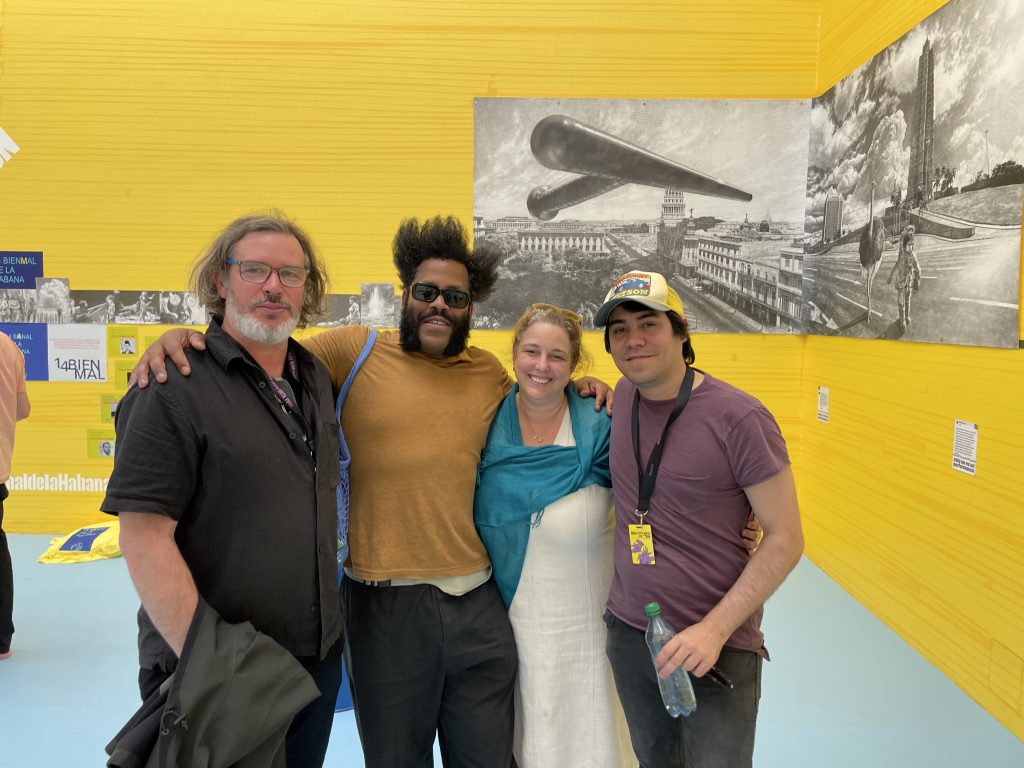Art & Exhibitions
Cuban Artists Show Up En Masse to Documenta, Bringing Their Plight at Home to the Wider Art World
Tania Bruguera may be the best known name at the show, but dozens more Cuban artists will partake in the event.

Tania Bruguera may be the best known name at the show, but dozens more Cuban artists will partake in the event.

by
Artnet News

This year’s edition of Documenta, which involves some 1,500 artists, includes a special presentation by Tania Bruguera and the Cuban collective Instituto de Artivismo Hannah Arendt (Instar) that highlights the difficulties Cuban artists are facing at home.
Among the participants is Hamlet Lavastida, the Cuban artist who was jailed in 2020 before being exiled into Poland last September. He’s showing work at this year’s Documenta as part of a collective of anti-government Cuban artists.
Lavastida’s is not the only recognizable face. The installation also includes a drawing of rapper and activist Maykel Castillo Osorbo, who’s still in prison in Havana, alongside a multimedia timeline that charts recent events in Cuba and its ongoing political crackdown. An adjoining room has a list of artists who were or are political prisoners in the country, plus printed face masks depicting the artists on spikes.
“The political gesture with our Instar is to bring all the people who have been erased from Cuban culture, because the Cuban government says they’re not artists,” Bruguera told Artnet News, standing barefoot on a carpet installation showing a map of Cuba. “But they’re here [at Documenta], so of course they are.”
Another of Instar’s projects is a to-scale fascimile of the home used by the Espacio Aglutinador collective for alternative art exhibitions that were censored by the government. The important space in Cuba has been active since the 1990s despite attempts to shut it down.
These works, which were made collaboratively, are all on view at Documenta Halle, one of the main venues for Documenta 15, which opens to the public on June 18.
Instar was founded in May 2015 by Bruguera in Havana after a marathon 100-hour collective reading of Arendt’s The Origins of Totalitarianism (1951), which artists say is relevant to Cuban conditions today.
“Freedom is the main tool of artists,” Bruguera said. She was initially invited by Ruangrupa, the curatorial collective behind the show, and, as per this year’s collectivity concept, she’s invited scores of artists to work together.
Two of the three Instar exhibition rooms will change over every ten days throughout 100 days to maximize the platform for Cuba’s political artists. Independent theater groups and publishers are also partaking in events.
“When you’re [fighting] an oppressive state, you’re proud to be an ex-convict,” Lavastida said. “They claim we’re trying to overthrow the government, and that I was a lead part of it. It’s true.” His contribution is a large wall mural that depicts the floor plan of the political prison in Villa Marista, where he was jailed.
Bruguera praised Ruangrupa and the efforts around the exhibition.
“Everybody is working towards a common goal. It’s not that foreign to us as a concept, but it’s great to see at such a scale,” she said.